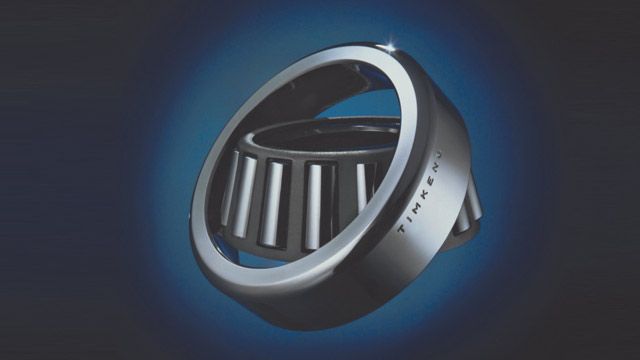Timken Improves Bearing Testing Process
"MATLAB is far and away the best development environment, with just the right combination of power and ease of use for engineering and scientific applications."
Challenge
Solution
Results
- Bearings delivered to market faster
- Manufacturing process refined
- Testing accelerated

For more than 100 years, The Timken Company has been designing and creating bearings for a variety of industrial applications, including drive shafts, disk drives, drilling rigs, rolling mills, and dental drills. Before reaching the market, however, the bearings must be subjected to numerous tests to ensure top quality and customer satisfaction.
The company’s research group refined and accelerated their testing processes using MathWorks tools. This helped Timken deliver high-quality products to the marketplace faster and meet their customers’ stringent requirements and specifications, such as improving correlation between bearing geometry and running torque.
“MathWorks tools provide us with a unified testing and analysis environment,” says Dave Cogdell, research specialist in the new product technology group at Timken Research. “Now, we can design and manufacture bearings that exactly meet our customers’ specifications and keep up with the high demand for our products.”
Challenge
The new product technology group at Timken Research sought greater efficiency in their testing process by developing analyses and a methodology to ensure high quality of their tapered roller bearing line.
Used in automobiles, light and heavy trucks, and aircraft, the bearings must be built to accuracy within millionths of an inch to reduce the noise, vibration, harshness, and friction of rotating machinery.
To measure and analyze dynamic torque and error motions, Timken would need to test the bearings under real-world conditions and collect resulting data. Torque and error motions tend to vary based on design and manufacturing processes, so the bearings also would need to be tested to determine the relationships between these processes and performance.
Cogdell sought to produce the test results graphically, so his team could act quickly in optimizing their manufacturing processes. “We used to generate stacks of paper six feet high that nobody wanted to read,” explains Cogdell. “We really needed to produce a graphical representation of the test results.”
Solution
Using MATLAB® and related toolboxes as a platform for data acquisition, testing, analysis, and visualization, Timken quickly measured and analyzed the bearings’ torque and error motions so the manufacturing team could deliver the highest quality product.
“Without MathWorks tools, I would have never attempted this project,” Cogdell says. “It would have been such a massive undertaking in any other language.”
First, Timken tested the bearings by controlling test instruments and collecting data using MATLAB and Data Acquisition Toolbox™.
For his test environment, Timken developed a customized test instrument manufactured by Professional Instruments Company. The instrument consists of an air bearing spindle, four capacitance probes, and a loading mechanism cylinder on a large granite slab.
Cogdell used MATLAB and Data Acquisition Toolbox to control and communicate with the custom instrument and collect test data from industry-standard data acquisition hardware. The collected data was brought directly into MATLAB for analysis and visualization of the results.
For the hardware, they used a 16-bit data acquisition board to read the four capacitance probes and another to control the motor speed and pressure to the load chamber. They created a GUI with MATLAB to translate the test data and DC voltages into binary format for analysis.
Next, Cogdell calibrated the instruments and applied nonlinear regression techniques to the testing process using Optimization Toolbox™.
“Optimization Toolbox let us quickly apply and then evaluate the performance of optimization algorithms from MATLAB,” says Cogdell.
Finally, Cogdell used Signal Processing Toolbox™ to analyze the bearings’ wobbling and torque in the frequency domain. With the toolbox, he quickly analyzed the data and identified characteristics that were associated with manufacturing tolerance ranges.
Today, Timken uses the bearing analyzer as part of their quality assurance process to ensure high product quality.
Results
Bearings delivered to market faster. “By bringing previously unavailable performance-related engineering information to the testing process, we can now bring the highest quality bearings to market faster,” says Cogdell. “MATLAB offers integrated tools to support the whole process—from data collection to analysis to results presentation.”
Manufacturing process refined. MathWorks tools delivered test results that gave Cogdell a much clearer understanding of how slight geometric variations within the bearings’ components can affect their torque and error motions. Using this information, they adjusted design tolerances and optimized their manufacturing processes.
Testing accelerated. “It may have been possible to do this project in C, but it is so much quicker to perform the testing with MATLAB than any other language,” says Cogdell.